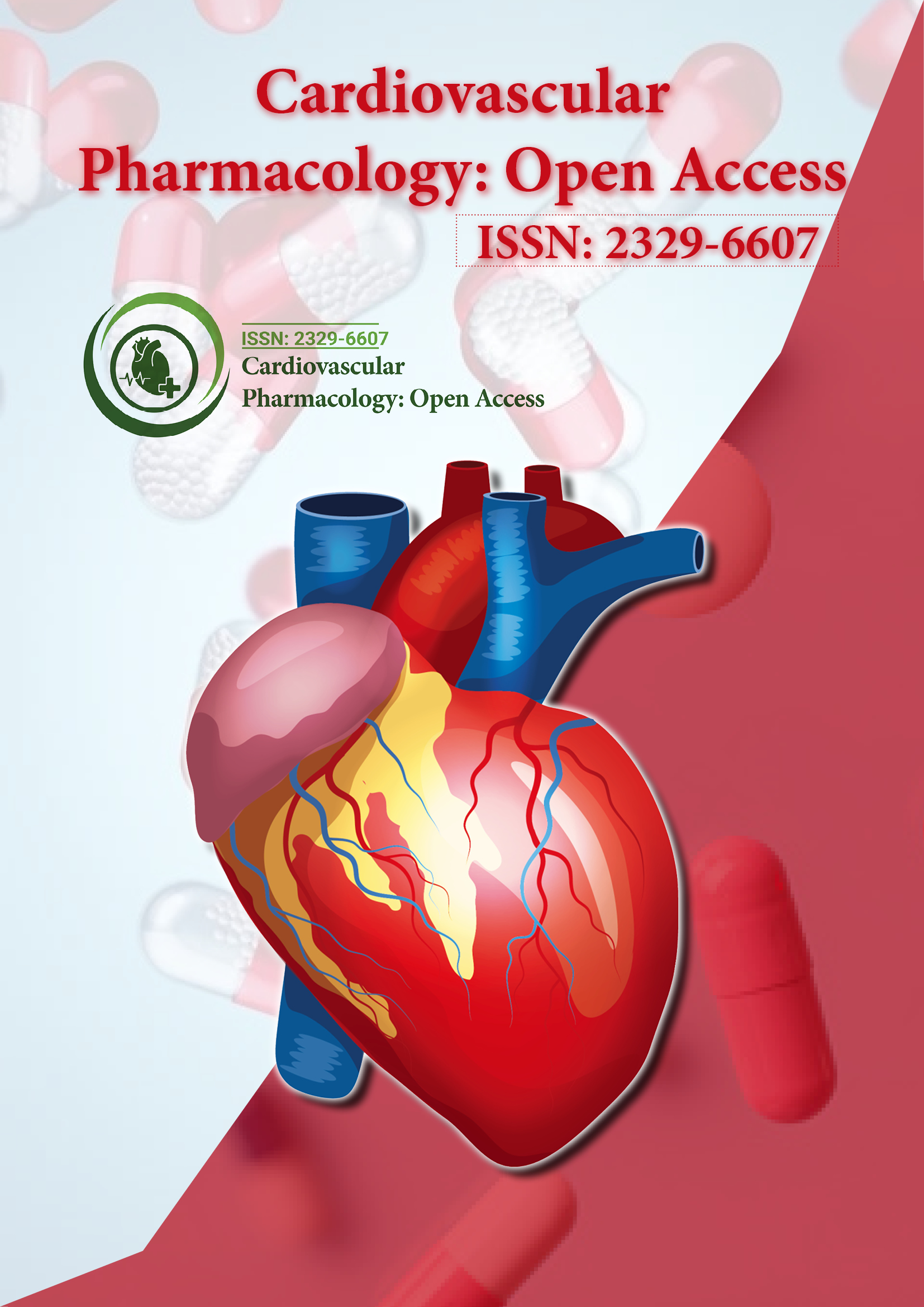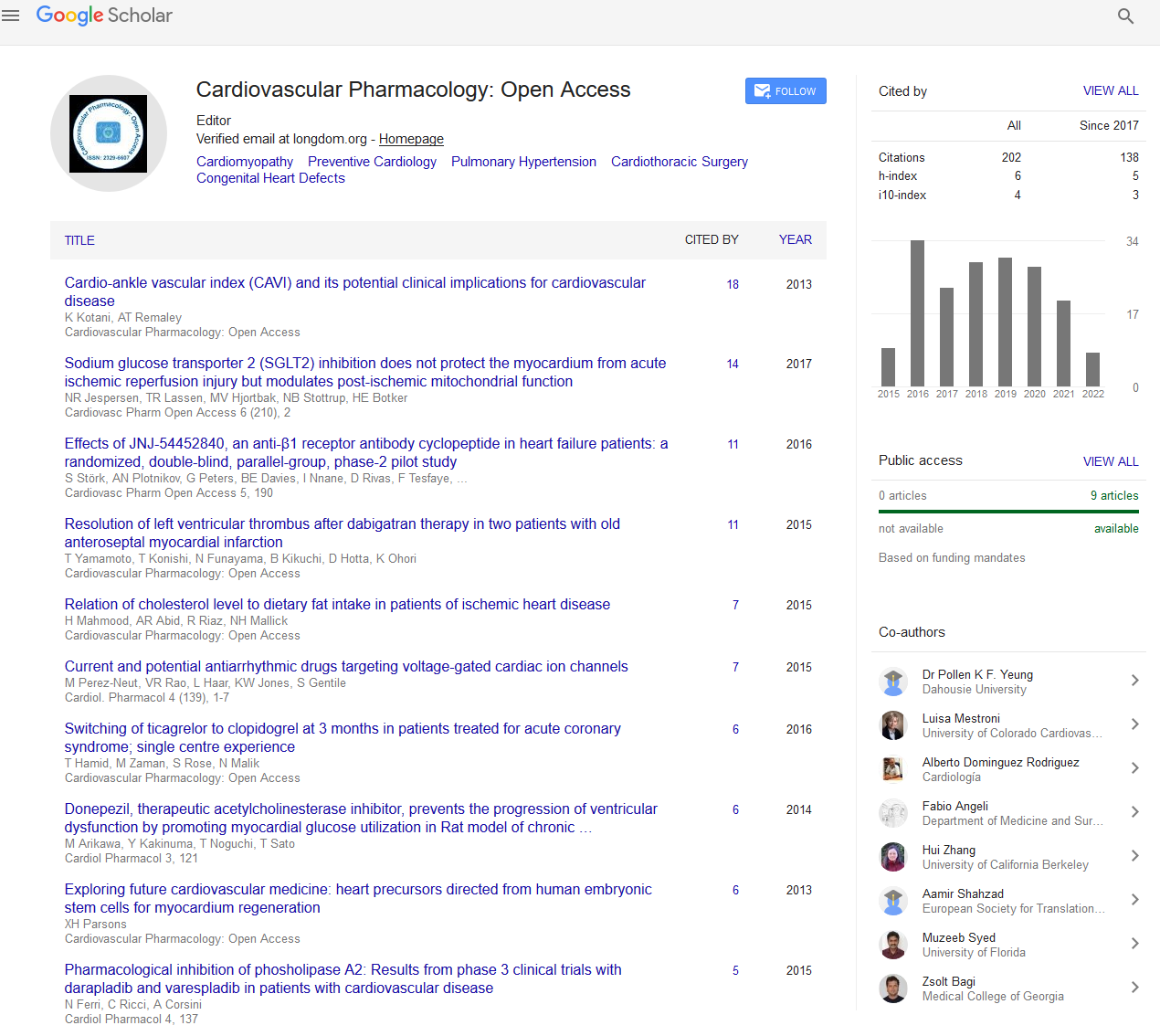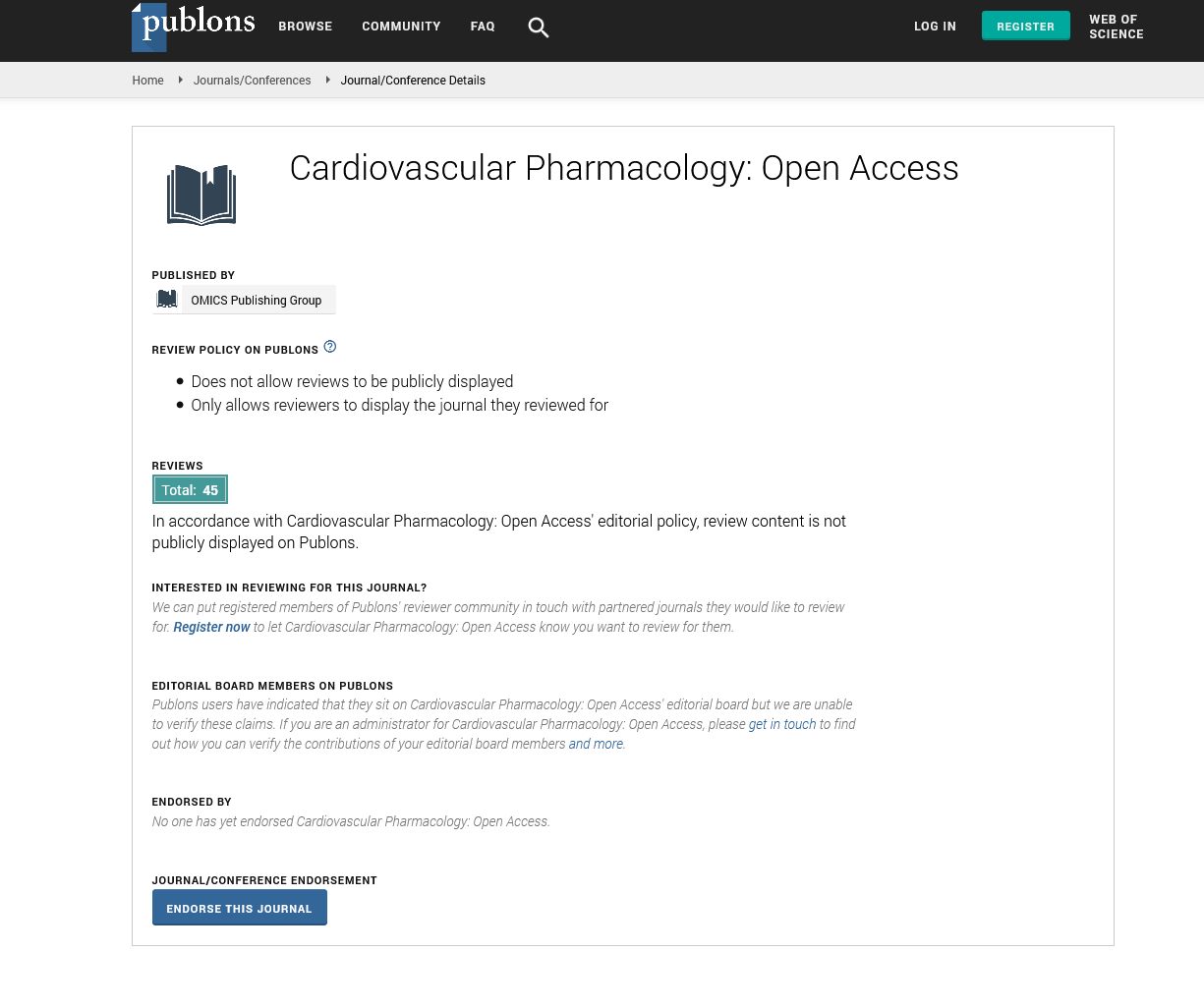Indexed In
- Open J Gate
- Cosmos IF
- RefSeek
- Hamdard University
- EBSCO A-Z
- OCLC- WorldCat
- Publons
- Geneva Foundation for Medical Education and Research
- Euro Pub
- Google Scholar
Useful Links
Share This Page
Journal Flyer

Open Access Journals
- Agri and Aquaculture
- Biochemistry
- Bioinformatics & Systems Biology
- Business & Management
- Chemistry
- Clinical Sciences
- Engineering
- Food & Nutrition
- General Science
- Genetics & Molecular Biology
- Immunology & Microbiology
- Medical Sciences
- Neuroscience & Psychology
- Nursing & Health Care
- Pharmaceutical Sciences
Commentary - (2022) Volume 11, Issue 12
E-Cigarettes: Effects and Cardiovascular Dysfunction
Francesco Thomas*Received: 04-Nov-2022, Manuscript No. CPO-22-19251; Editor assigned: 07-Nov-2022, Pre QC No. CPO-22-19251 (PQ); Reviewed: 21-Nov-2022, QC No. CPO-22-19251; Revised: 29-Nov-2022, Manuscript No. CPO-22-19251 (R); Published: 07-Dec-2022, DOI: 10.35248/2329-6607.22.11.321
Description
The use of e-cigarettes has increased, but their long-term effects on health are still unknown. Through an autonomic imbalance, e-cigarette aerosols containing nicotine and acrolein, a combustion and e-cigarette by-product, may damage cardiac electrophysiology. We demonstrate here that acute inhalation of e-cigarette aerosols disrupts cardiac conduction, in part through parasympathetic modulation, in mouse electrocardiograms. We show that aerosols from e-cigarette solvents cause bradycardia, bradyarrhythmias, and elevations in heart rate variability during inhalation exposure, with inverse post-exposure effects, much like acrolein or combustible cigarette smoke. With tobacco- or menthol-flavored aerosols that contain nicotine and in female mice, these effects are less pronounced. However, menthol alone changes atrial and atrioventricular conduction, whereas menthol flavored and PG aerosols also increase ventricular arrhythmias and augment early ventricular repolarization. Heart rate and early repolarization are reduced by exposure to the vegetable glycerin and acrolein by-products found in e-cigarette aerosols. While ventricular arrhythmias positively correlate with early repolarization dependent on nicotine presence, solvent aerosols' pro-arrhythmic effects on ventricular repolarization and heart rate variability depend in part on parasympathetic modulation. Our research suggests that the chemical components of e-cigarettes may increase the risk of developing heart disease by causing pro-arrhythmic changes and triggering autonomic reflexes.
Due to the belief that using an electronic cigarette is safer than smoking, its use has reached epidemic levels. Youth e-cigarette use has increased dramatically over the past four years, with more than 25% of high school students and 10% of middle school students in the US reporting current use prior to the COVID-19 pandemic. The discovery that e-cigarettes may increase smoking initiation has sparked intense debate on the benefits and drawbacks of e-cigarettes, along with conflicting reports that they may help people quit smoking or continue doing so. Some people claim that e-cigarettes are low-harm products because they deliver nicotine without burning tobacco, and their aerosol contains significantly less tar, carbon monoxide, and carcinogenic nitrosamines than cigarette smoke. The use of e-cigarettes, however, may expose users to cardiopulmonary toxicity. Studies have shown that e-cigarette aerosols contain aldehydes and particulate matter at levels that are comparable to or higher than those of traditional cigarettes, and that these levels rise when flavours like menthol are added. It is still unknown how toxic these components are at the concentrations present in e-cigarette aerosols. However, recent instances of e-cigarette or vamping-related lung damage have brought attention to the potentially deadly nature of specific eliquid ingredients.
Conclusion
Investigations in both animals and humans show that e-cigarettes promote hypertension, autonomic imbalance, and vascular dysfunction via nicotine and/or flavours, despite the fact that evidence for the cardiopulmonary toxicity of chronic e-cigarette use is largely limited to animal studies. Furthermore, recent research shows that nicotine-containing e-cigarette aerosol exposure in thermogenesis mouse models chronically induces systolic dysfunction and atherosclerosis while acutely delaying ventricular repolarization in humans. However, the effects of e-cigarettes on cardiac function have hardly been researched; even the functions of the two solvents most frequently found in e-cigarettes, propylene glycol and vegetable glycerin, are still largely unexplored. To deliver nicotine and/or flavours to the lungs, PG and VG are aerosolized into PM by e-cigarettes. The aldehydes acrolein, formaldehyde, and acetaldehyde that are produced differently by PG and VG upon thermal degradation are thought to be responsible for 92% of the cardiovascular toxicity of cigarette smoke. Cardiovascular dysfunction is brought on by the inhalation of other types of PM at levels much lower than those found in e-cigarettes, and negative cardiovascular effects are brought on by exposure to gaseous aldehydes at pertinent concentrations. Therefore, assessing the potential toxic effects of e-cigarette aerosols and figuring out which e-cigarette components are responsible for these effects are of great public health importance.
Citation: Thomas F (2022) E-Cigarettes: Effects and Cardiovascular Dysfunction. Cardiovasc Pharm. 11:321.
Copyright: © 2022 Thomas F. This is an open access article distributed under the terms of the Creative Commons Attribution License, which permits unrestricted use, distribution, and reproduction in any medium, provided the original author and source are credited.


